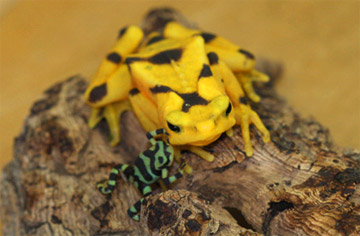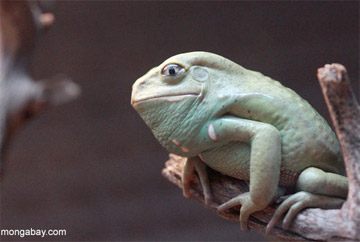|
|
Amphibians are going extinct around the globe. As a scientist specializing in frogs, I have watched dozens of species of these creatures die out. The extinction of frogs and salamanders might seem unimportant, but the reality couldn’t be farther from the truth. Indeed, from regulating their local ecosystems, to consuming and controlling the population of mosquitoes and other insects that spread disease, to potentially pointing the way to new drugs for fighting diseases such as cancer or HIV-AIDS, the fate of these creatures is inexorably linked to our own.
The number one danger to most species today is habitat loss. But a new threat, specific to amphibians, has spread like wildfire across the globe. From the Panamanian jungles in Central America to the Appalachian Mountains, entire species of frogs and salamanders are disappearing at an alarming rate. But while few areas remain unaffected by this plague, it’s not too late to implement global conservation policies that could mean the difference between survival and extinction for whole species of frogs.
 Mother Panamanian golden frog with its green froglet. The Panamanian golden frog (actually a species of toad) is nearly extinct in the while due to chytridiomycosis. |
This epidemic is due to a disease called chytridiomycosis, caused by a microscopic fungus that lives in water and moist soil. Animals that live primarily in cool, moist environments are the perfect target for the deadly pathogen.
This disease does not respect boundaries between countries or those that identify protected areas. We have already officially lost more than 120 species, but the real number is likely much higher, as lack of research funding limits the necessary investigations required to officially declare a species extinct or to even identify many of those that can be distinguished only through genetic analyses.
Such extinctions can devastate nature’s ecosystems, but humans will feel the loss, too. Biomedical researchers have relied on other species of animals to help understand and treat disease in humans for generations. Indeed, two of my colleagues recently found some chemicals that are naturally produced in the skin of various frog species, that can kill the HIV virus, certain kinds of cancers and other microbial pathogens.
But when species go extinct, our list of ingredients for products and pharmaceuticals shrinks, potentially erasing cures before they are discovered. And with one in three amphibians currently in danger of extinction, researchers are now locked into a high-stakes race with the clock.
 Waxy monkey frog. |
U.S. policymakers should get serious about saving amphibians. Most of the world’s frogs live in developing countries, which lack the economic resources to protect their habitats and fight the spread of the fungus. Additional U.S. funding for labs already working on innovative potential cures would be a fabulous investment. It is also critical that the U.S. and other developed nations provide financial support to help protect frog habitats in the developing world. Rampant destruction of wetlands and tropical forests around the world could leave many frog species with nowhere to call home, even if we can keep them healthy.
Beyond that, leaders in Washington should move to create a national strategy to address the overall global species extinction crisis. Currently, with more than six federal agencies involved in international conservation, we still lack any coordination or overarching strategy.
Meanwhile, all over the world, we are losing our rich diversity of plant and animal species at an unprecedented rate. Although most of this occurs in the developing world, it affects people everywhere. The services provided by amphibians go far beyond their aesthetic appeal and their iconic calls on summer evenings. Frogs and salamanders, like the other wild inhabitants of our planet, make the world a better place.
Scientists have concluded we have only a decade to substantially scale up conservation efforts to address this extinction crisis or we face irreversible losses. And while time may be short, there is still an opportunity to preserve the bounty of nature we have remaining — a task that’s critical not only for nature’s sake, but our own as well.